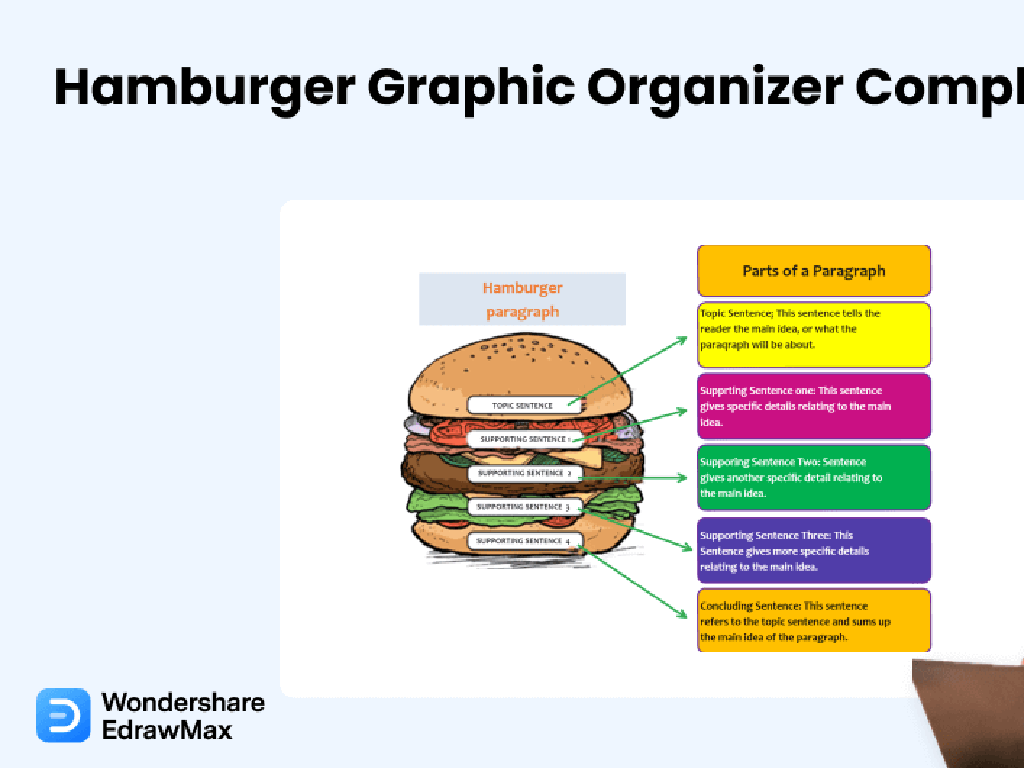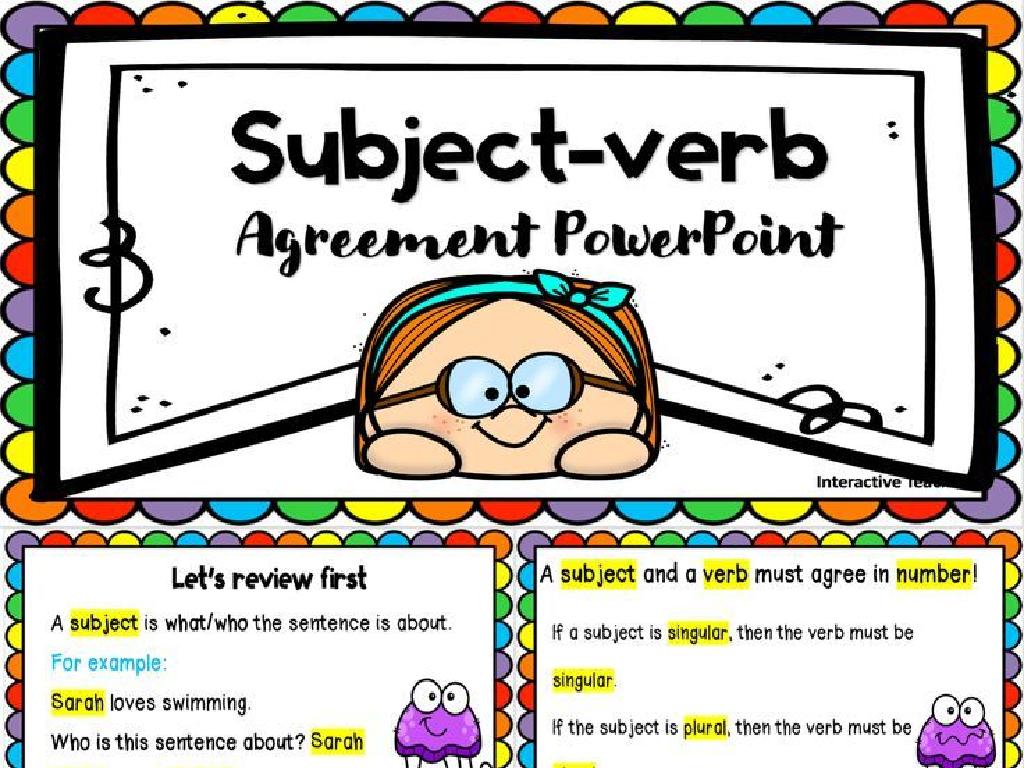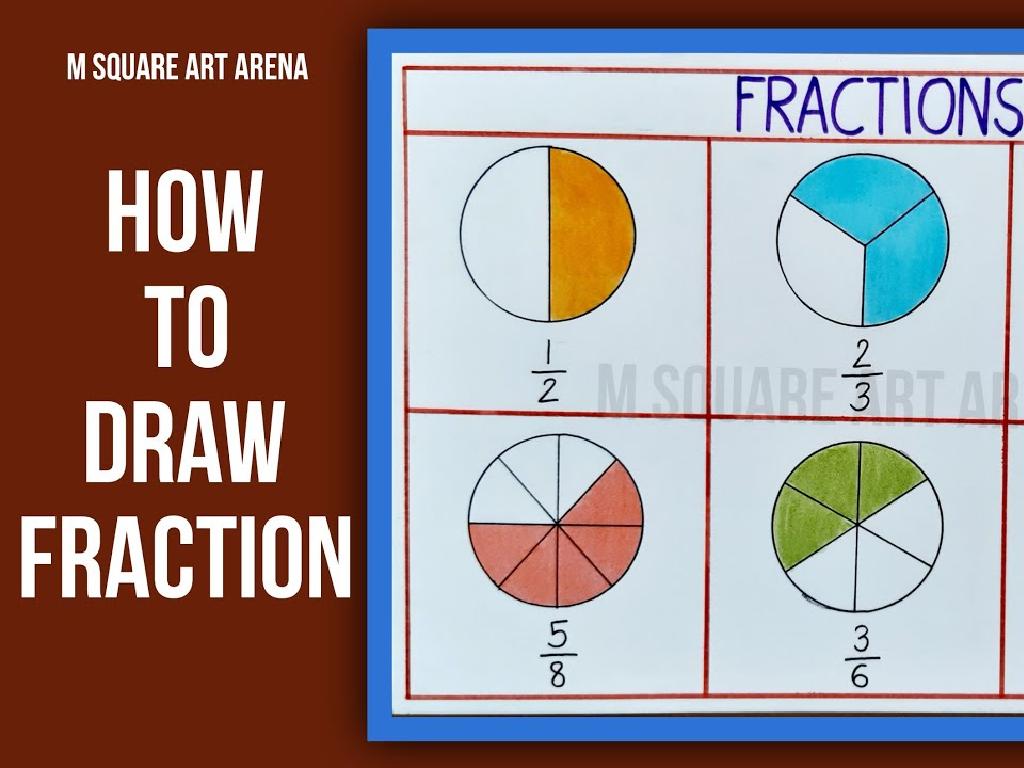Addition Sentences Up To 10: Which Model Matches?
Subject: Math
Grade: First grade
Topic: Understand Addition
Please LOG IN to download the presentation. Access is available to registered users only.
View More Content
Welcome to Addition!
– Learn to add numbers up to 10
– Combining numbers makes new ones
– Like putting 2 apples with 3 apples to get 5 apples
– Using pictures to understand addition
– Visual aids like number lines or dot figures
– Practice with real objects
– Counting items like blocks or beads to sum up
|
This slide introduces first graders to the concept of addition as a way of combining numbers to make new ones. Start by explaining that addition is simply putting together amounts of things, like toys or candies. Use visual aids such as pictures of objects, number lines, or dot figures to illustrate simple addition problems. Encourage the students to practice by using real objects they can touch and count, such as blocks or beads, to create a tangible understanding of the addition process. Make sure to keep the examples simple and relatable, and provide plenty of praise as they begin to grasp the concept of adding numbers up to 10.
Understanding Addition: Combining Numbers
– Addition combines numbers
– It’s like putting 2 apples with 3 apples to have 5 apples
– Like adding toys together
– Imagine you have 4 red balls and 3 blue balls, how many balls do you have in total?
– Use the plus sign (+)
– The ‘+’ sign tells us to add
– Find the total amount
– We count all items from both groups together
|
This slide introduces the concept of addition to first graders by relating it to something they are familiar with, like toys. Explain that addition is simply the process of combining two or more groups to find out the total number. Use tangible examples like combining different colored balls or different types of fruits to illustrate the concept. Show them the plus sign and explain that it’s a special symbol used in math to tell us to add the numbers together. Encourage the students to practice by using real objects or drawings to add things they like. The goal is to make them comfortable with the idea of addition as a method of finding out ‘how many in total’ when groups are combined.
Addition Sentences: Combining Numbers
– What is an addition sentence?
– It’s like a math sentence showing how to put numbers together.
– Example with teddy bears
– If we have 2 teddy bears and get 3 more, we now have 5 teddy bears.
– ‘Addends’ are numbers we add
– In ‘2 + 3 = 5’, 2 and 3 are addends.
– ‘Sum’ is the answer in addition
– The sum is the total, so 2 and 3 added together make the sum of 5.
|
This slide introduces the concept of addition sentences to first graders. Start by explaining that an addition sentence is a way to write down what happens when we combine numbers. Use tangible examples like teddy bears to make it relatable. Clarify the terms ‘addends’ and ‘sum’ with simple definitions and examples. For instance, show that when we add 2 teddy bears to 3 teddy bears, we end up with a total of 5 teddy bears, which is the sum. Encourage the students to think of their own examples and to visualize the process of adding items they are familiar with, such as toys or fruits.
Matching Models to Addition Sentences
– Pictures represent addition
– Visuals like 3 apples + 2 apples = 5 apples
– Objects group for sentences
– 4 toy cars + 1 toy car = 5 toy cars
– Each model pairs with a sentence
– Find the addition sentence for a set of items
– Let’s practice matching!
|
This slide is aimed at helping first graders understand the concept of addition by using visual aids and tangible objects. By associating pictures or physical items with addition sentences, students can better grasp the idea of combining two groups to find a total. Encourage the students to count items in images or objects they have, such as pencils or blocks, and then match them to the correct addition sentence. During the practice session, provide various examples and let the students come up to the board to make matches. This interactive approach helps solidify their understanding of basic addition.
Let’s Practice: Matching Models to Sentences
– Observe the picture carefully
– Count objects in each group
– How many objects are in the first group?
– Count all objects together
– Add up the total number of objects
– Write the matching addition sentence
– Example: 3 apples + 2 apples = 5 apples
|
This slide is designed to help students practice the concept of addition by using visual aids. Students should look at the pictures provided and count the objects in each group separately. After they have the count for each group, they should then count the total number of objects to find the sum. The final step is for them to write down the addition sentence that represents what they did. For example, if there are 3 apples in one group and 2 in another, the addition sentence would be 3 + 2 = 5. Encourage students to use their fingers or counters to help them count. This activity will reinforce their understanding of addition and how to create addition sentences from visual models.
Example Time: Matching Models with Addition Sentences
– Count objects together
– Let’s count the apples: 1, 2, 3, plus 2 more makes 5
– Write the addition sentence
– For example, 3 apples + 2 apples = 5 apples
– Find the total number
– The total is how many objects we have in all
– Practice with different objects
|
This slide is designed to demonstrate the concept of addition through hands-on examples. Show the students objects like blocks or apples, and count them one by one. Then, write the addition sentence on the board as you count, such as ‘3 blocks + 2 blocks = 5 blocks’. Emphasize that addition is about finding the total number of items when we put groups together. Encourage the students to participate by counting aloud with you and to write the addition sentence on their own. After the example, allow the students to practice with different sets of objects to reinforce the concept. This interactive approach helps solidify their understanding of addition up to 10.
Your Turn to Add!
– Practice addition with objects
– Partner up for matching activity
– Match objects to sentences
– Use the objects to form addition sentences that sum up to 10
– Discuss findings with the class
|
This slide is designed to engage students in a hands-on addition activity. Provide a variety of objects for the students to use, such as blocks, beads, or counters. Students should work in pairs to encourage collaboration. They will use the objects to create addition sentences that add up to 10, then find the matching written sentence. After the activity, facilitate a discussion where each pair shares their sentences and explains how they matched the objects to the sentences. This will reinforce their understanding of addition and the concept of matching models to sentences. Prepare to offer guidance and ensure that each student is actively participating and grasping the concept.
Class Activity: Addition Bingo!
– Let’s play Addition Bingo
– Match sentences to pictures
– Find the picture that shows the addition sentence
– Cover the matched spots
– Use counters to cover the correct spots
– Shout ‘Bingo!’ for a full row
– Be the first to get a full row covered
|
This interactive class activity is designed to help first graders practice addition up to 10 in a fun and engaging way. Each student will receive a bingo card with different addition sentences and corresponding pictures. As the teacher calls out addition problems or shows pictures, students will have to find the matching sentence and cover it with a counter. The goal is to recognize the correct addition model that matches the visual representation. This activity not only reinforces addition skills but also encourages attention to detail and quick thinking. Possible variations of the activity could include using different themes for the bingo cards, having students create their own cards, or playing in small groups. Remember to celebrate every ‘Bingo!’ and review any mistakes to ensure understanding.
Addition Mastery: Up to 10
– Celebrate learning addition up to 10
– Addition: combining groups together
– Like adding 2 apples + 3 apples to make 5 apples
– Practice with toys or snacks at home
– Use your toys to make groups and add them
– Keep practicing for perfection
– The more you practice, the better you’ll get!
|
This slide is a conclusion to reinforce the concept of addition for first graders. It’s important to celebrate their achievement in learning how to add numbers up to 10. Remind them that addition is simply the process of putting different groups together to find out how many items there are in total. Encourage them to practice with familiar items like toys or snacks to make learning fun and relatable. Reinforce the idea that practice is essential to mastering addition, and the more they practice, the better they will become at it. This slide should leave the students feeling accomplished and motivated to continue practicing addition outside of the classroom.






